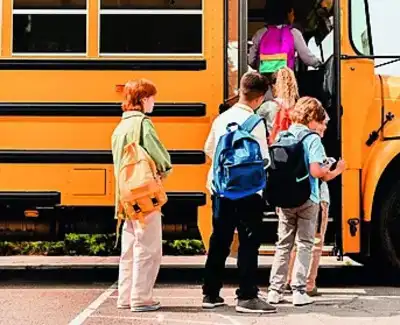ARTICLE AD BOX

On the morning of June 30, a single email changed the course of an entire school district. In Ashe County, North Carolina, superintendent Eisa Cox watched $1.1 million in federal funds—money earmarked for teacher training, after-school care, and even salaries—slip away in the time it took to read a few lines on her screen.
The message from the US Department of Education was blunt: The money was frozen, pending a review to ensure it aligned with “the president’s priorities.”For a rural district still clawing its way back after Hurricane Helene, where more than half of the children qualify as economically disadvantaged, the timing was brutal. “It is scary to think about it,” Cox said to The Guardian. “You’re getting ready to open school and not have a significant pot of funds.”She was not alone. Across the United States, thousands of school districts saw nearly $7 billion in promised federal funding suddenly locked away at the stroke of a political pen. For weeks, administrators scrambled to prevent layoffs, patch budgets, and reassure frightened teachers. Some relief came on July 25, after an outcry from lawmakers and a multistate lawsuit forced the Trump administration to release the money.
But the scars remain, and the episode revealed a new reality: Federal funding for public schools is no longer dependable.
When money vanishes overnight
In Ashe County, where fragrant Fraser firs dominate the hillsides and agriculture sustains the economy, school budgets are a fragile balance of state, local, and federal dollars. Federal funds account for 17 percent of the district’s revenue—above the national average of 14 percent. That money pays for much more than books.
It sustains after-school programs serving 250 children, supports mentorship for early career teachers, and ensures migrant families have an advocate to navigate language barriers and basic needs.When those dollars froze, the human consequences became clear. “I had teachers crying, staff members crying. They thought they were going to lose their jobs a week before school,” recalled Curtis Finch as reported by The Guardian, superintendent in Arizona’s Deer Valley Unified School District.
The fear was widespread: Educators saw livelihoods, and students saw stability, threatened by a political maneuver.
The ripple effect
The freeze coincided with other looming cuts. Proposed Republican budget measures in the House would slash funding for Title I schools serving low-income students and reduce allocations for children with disabilities. Beyond education, the One Big, Beautiful Bill Act proposes reductions to Medicaid and food stamps, a blow to schools where poverty is already entrenched.
In Colorado Springs, Harrison School District 2 fears losing half of the $15 million in Medicaid funding that currently pays for counselors and nursing services.
A quiet balancing act
In conservative counties like Ashe, where Donald Trump won 72 percent of the vote, the dilemma is sharper. School leaders depend on federal money, yet raising alarm risks political backlash. Cox, however, sees the disruption as a teaching moment. “It’s an opportunity for me to educate them,” she said of her community and lawmakers as reported by The Guardian. She insists her representatives do care, even if they don’t fully understand how deeply the funds shape daily school life.
Beyond Ashe: A national reckoning
Detroit braces for the loss of Title III funding that supports more than 7,000 English learners. In Wyoming, Sheridan County School District 3 confronts the disappearance of money for teacher quality and rural support. From Appalachia to the Rocky Mountains, administrators are revising spreadsheets and recalibrating expectations, knowing full well that the stability once taken for granted is gone.And all this unfolds against the backdrop of a president who has openly pledged to shutter the Department of Education, shifting responsibility to the states. For rural superintendents like Cox, that raises yet another question: If federal authority recedes, will state governments be equipped, or willing, to fill the gap?
Counting beans in uncertain times
Back in Ashe County, Cox found herself one August morning dropping beans into a jar, following an Appalachian folk practice: One bean for every foggy morning in August, each bean predicting a snow day come winter.
By the end of the month, she counted 21.It was a nervous laugh she offered when she recalled it. But her point was clear: She may be able to plan for snow with beans, but there is no folklore, no playbook, that prepares a district for political decisions that yank millions away overnight.In America’s classrooms, education has always been about resilience, resilience of teachers, families, and children. But as federal funds teeter under political will, resilience alone may not be enough to keep the doors open and the lights on.



.png)
.png)
.png)
















 1 hour ago
4
1 hour ago
4









 English (US) ·
English (US) ·